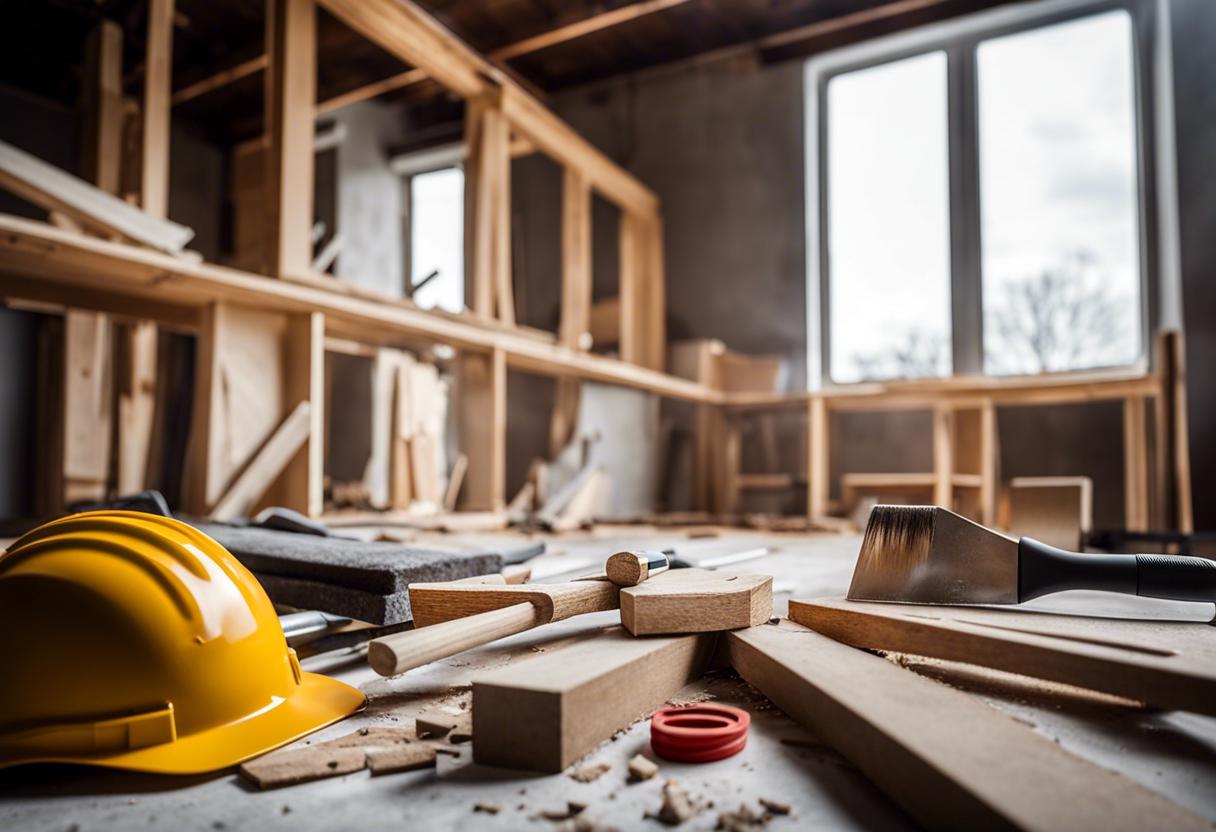Starting a renovation or expansion project on your home can be an intimidating process, even for those who have previous renovation experience. I’ve experienced this personally as I renovated my own house a few years ago, and I understand the challenges that my clients face – particularly in regard to budget management. However, for individuals undertaking this venture for the first time, the journey can be riddled with hidden financial traps. Here’s an outline of some of the most prevalent ones to be aware of, enabling you to approach your home renovations like a seasoned expert.
Building Expenses
The cost of construction is an ever-climbing figure, and this presents a considerable problem for homeowners who are considering renovations, as initial budget projections may not correspond with the current market rates. Engaging professionals such as quantity surveyors, architects, or contractors can offer valuable advice on how to save costs and suggest alternative materials that won’t compromise quality.
Regular reviews of the costs throughout the planning and execution stages of the project are also vital. Costs can fluctuate over time, consequently an estimate you received at the inception of the project, may significantly differ weeks or months later. For example, if you obtained an estimate prior to planning, you might discover that the costs have escalated considerably by the time you submit your sketches for pricing to contractors four or six months afterwards.
Maintaining vigilance and revising cost forecasts at frequent intervals will help you sidestep unexpected shocks and allow you to keep tighter control on your budget throughout the renovation process.
Poor Calculation of Fundamental Expenses
Another frequent error in budget planning is the underestimation of fundamental construction costs. It’s critical to determine what is included in the builder’s quote and what elements you will need to pay for separately. More often than not, the builder’s quote will include the costs for construction, electrical and plumbing work, internal doors, finishes, and sanitary ware installations. However, it usually does not include elements like windows, kitchen components, bathroom fixtures or finishes.
Ensure you procure no less than two quotes and thoroughly examine and compare them prior to making a decision. Draft a precise brief and describe the scope of work for each contractor to ensure you are making an accurate comparison.
When deciding to hire a contractor, refrain from settling for the first one encountered or one whose availability is suitable. The low-cost options should not be your only deciding factor as cheap doesn’t always translate to the best. Be sure to cross-verify references, converse with past customers, or inspect previously completed works.
Renovations usually involve kitchens, bathroom installations, joinery and flooring and these are typically the most thrilling parts, as these are the elements you’ll interact and witness on a daily basis. However, the expenses for these can greatly fluctuate depending on your choices. To preclude financial shocks, an essential step is to adequately research and allocate sufficient funds for your fittings and finishes.
Begin by having a comprehensive understanding of potential costs and then devise a budget that aligns with your capacity. Accumulate quotations from a handful of reliable suppliers and contrast the prices to ensure you’re obtaining top value for your expenditure.
One critical principle is to fix your fixtures and fittings ahead of your builder commencing work. Considering the constant fluctuations of prices and supply, making these choices beforehand will assist you to adhere to your budget and ensure smooth progress. This will also prevent the stress of having to make hurried decisions during the construction.
Just as with any planning, however meticulous it may be, the presence of unexpected surprises and expenses during a renovation is inevitable. Consequently, allotting a contingency budget, usually about 10% of the overall construction costs, is a prudent move. This safety net can alleviate stress and enable you to tackle any unexpected hurdles without compromising on the quality of your work or disrupting your schedule.
One of the preferred home refurbishment projects, kitchen renovations, is notorious for their potential hidden costs. Costs associated with removal of old fittings, instalment of new appliances and electrical enhancements can quickly escalate. To monitor these costs, it’s key to scrutinise your kitchen area thoroughly, identify any lurking expenses and then reserve extra budget for these unforeseen costs. A close alliance with your contractor and suppliers will also help to circumvent these additional expenses and assure that your renovation proceeds on schedule.
Selecting your kitchen components, such as appliances and worktops, requires not only an eye for design but also budget mindfulness. The price tags attached to unique finishes, countertop materials, and installation processes can significantly affect your financial plans. Hence, it’s important to conduct comprehensive research, request in-depth quotes, and hone in on the elements that are truly important to you. This approach will help optimise your budget and achieve your dream kitchen without financial distress.
Alterations during the Project
Getting carried away with fresh concepts and having the desire to introduce or modify components throughout a refurbishment is common. It’s normal to tweak your blueprint as the work progresses, but bear in mind, adjustments initiated halfway through may result in additional charges and postponements.
To prevent these issues, it’s advisable to settle on your design plans before initiating the construction work. It’s crucial to communicate upfront with your contractor about any possible changes you might consider. Open and direct dialogue aids in ensuring a seamless process, saves you valuable time, and averts excessive expenditure.

